
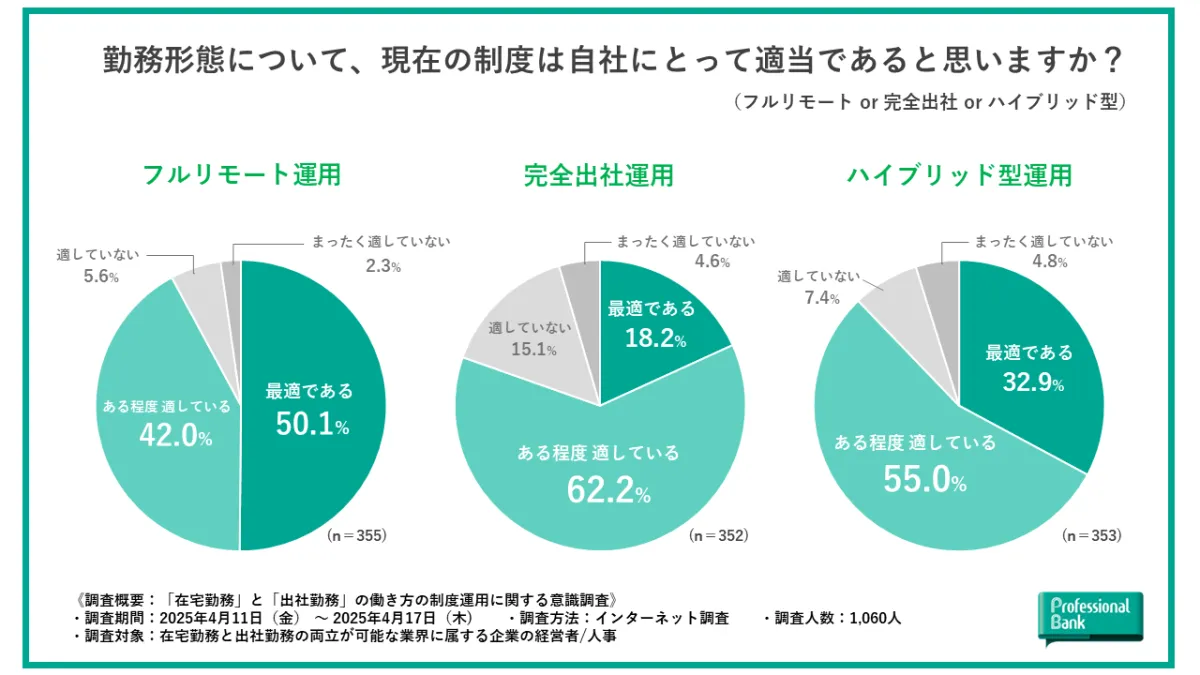
Business Leaders Discuss Preferences on Remote Versus In-Office Working Models
Exploring Preferences in Remote and In-Office Working Models
In an era where the workplace has rapidly transformed, organizations have adapted to a new norm instigated by the pandemic. A recent survey conducted by Professional Bank's HR Research Institute sought to uncover the perspectives of company leaders and HR professionals on remote and in-person work arrangements. The study surveyed 1,060 participants from various industries, such as IT, finance, real estate, and consulting, who have the capability to balance remote and in-office work.
Survey Overview
The survey aimed to analyze how business leaders perceive the applicability of their current working models. Key details from the research include:
- - Period: April 11 to April 17, 2025
- - Participants: 1,060 respondents, categorized into fully remote (355), fully on-site (352), and hybrid model (353) companies.
- - Method: Online research through PRIZMA, a platform offered by Link and Partners.
Key Findings
The results revealed that over 80% of executives across all working models deemed their organization's work policies appropriate. Notably, more than 90% of fully remote companies expressed high satisfaction with their work arrangements. The hybrid model emerged as the most favored choice among respondents, indicating a strong inclination towards a blend of both remote and in-office experiences.
The main takeaways can be summarized as follows:
- - Remote Work: Cited benefits include lower operational costs and enhanced recruitment capabilities.
- - On-Site Work: Business leaders emphasized that this model promotes increased employee engagement and a stronger company culture.
- - Hybrid Work: This model benefits from flexible commuting and fosters a balance between personal and professional life.
Detailed Insights
1. Appropriateness of Current Models:
Of the respondents, those representing fully remote operations predominantly agreed that the current model was highly suitable. Specifically, 50.1% stated it was optimal, while 42% felt it was somewhat fitting. In comparison, on-site organizations reported 62.2% as finding it somewhat suitable. The hybrid model's sentiment was also strong, with 55% feeling it appropriately fits their organization's needs. The overwhelming sense of satisfaction indicates a growing confidence in the adapted work environments.
2. Advantages of Remote Work:
Among those satisfied with remote work, primary advantages included significant savings on office space and commuting costs, alongside the ability to enhance recruitment efforts (45.6%, 35.8%, and 34.3%, respectively). The survey showed that while health considerations once drove the shift to remote work, productivity and cost savings are now the main focus.
3. Benefits of Fully On-Site Operations:
In contrast, leaders from fully on-site companies pointed out that improved performance (40.3%) and better engagement (29%) were primary reasons for their model's perceived effectiveness. The establishment of a cohesive company culture and efficient management were also critical factors supporting the on-site work preference.
4. Hybrid Model Insights:
Companies utilizing hybrid models highlighted decreased commuting times and office costs as significant benefits. The unique aspect of this model is its inherent flexibility, allowing companies to combine the positive elements from both the remote and onsite work models.
Challenges Faced by Each Model
- - Fully Remote Work: While businesses noted a high satisfaction, several acknowledged challenges, such as reduced personal growth opportunities (21.4%) and the potential for operational delays in urgent situations (21.4%).
- - Fully On-Site Work: The primary obstacle identified was the financial burden of office rent and commuting (27.5%), alongside issues like diminished work-life balance (26.1%).
- - Hybrid Model Challenges: The hybrid model's main challenges revolved around operational efficiency during remote periods, with 32.6% citing delays in urgent matters and difficulties managing work balances between remote and in-office situations.
Future Perspectives
The survey also delved into the ideal working arrangements looked for by business leaders. The findings suggested discrepancies among work models, with remote and hybrid formats being popular preferences. Interestingly, those in fully on-site companies showed a preference for hybrid models, indicating a significant shift towards blended work arrangements.
Conclusion
These findings illustrate the evolving landscape of workplace preferences among company leaders. Across all models, a consistent theme emerges: while leaders are largely satisfied with their current systems, the ongoing discourse suggests a critical analysis of the integration of both remote and on-site work strategies will be vital for future organizational success. Understanding these nuances will foster an environment conducive to enhancing employee satisfaction and overall organizational performance.
About Professional Bank
Founded in 2004, Professional Bank is a leading headhunting firm in Japan, committed to enriching the future by connecting talented professionals with industries that require their expertise. With an emphasis on strategic human capital management, they continuously seek to improve talent acquisition processes across varied sectors.
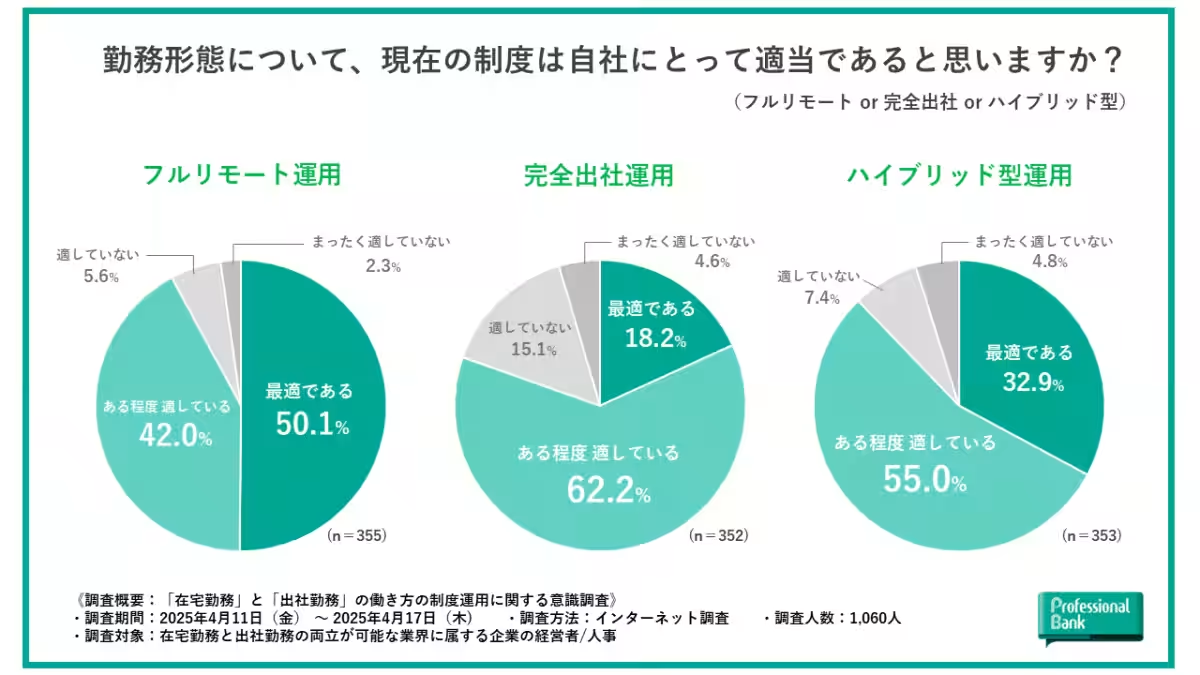
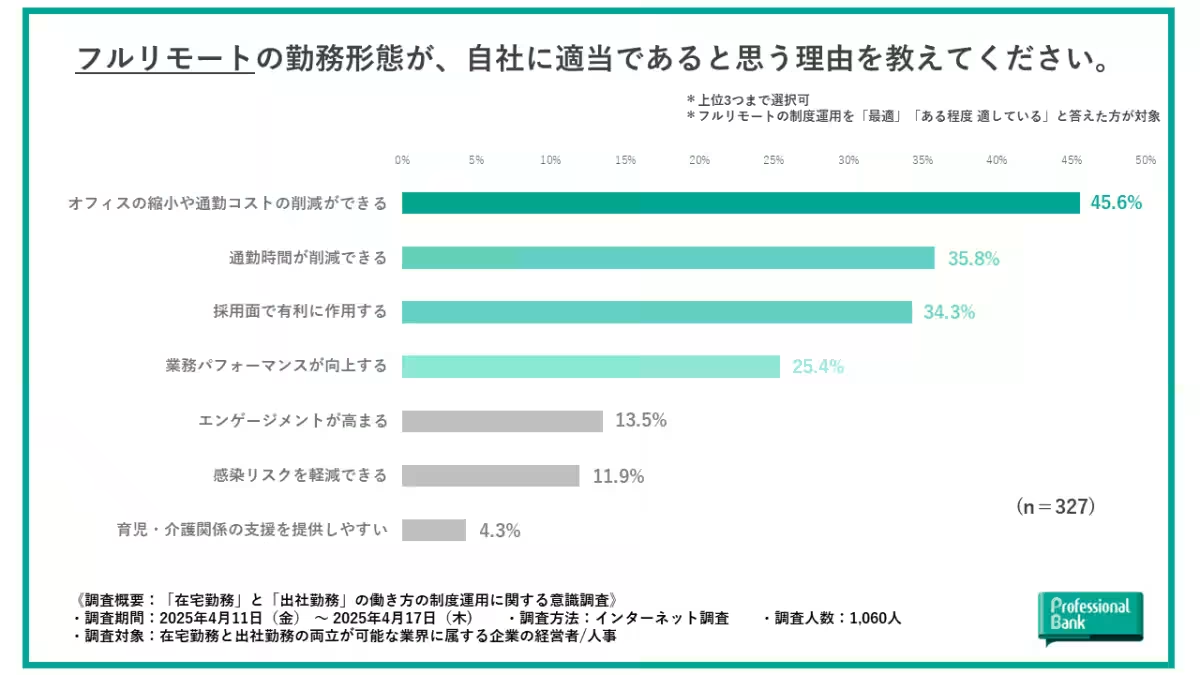
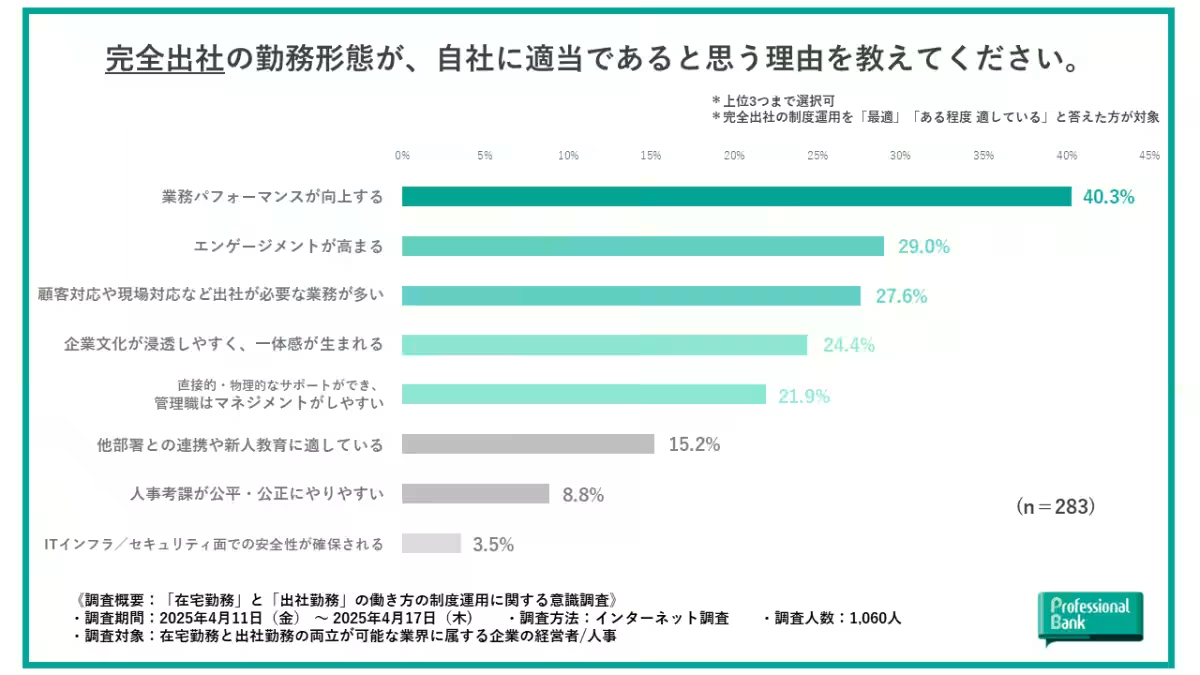

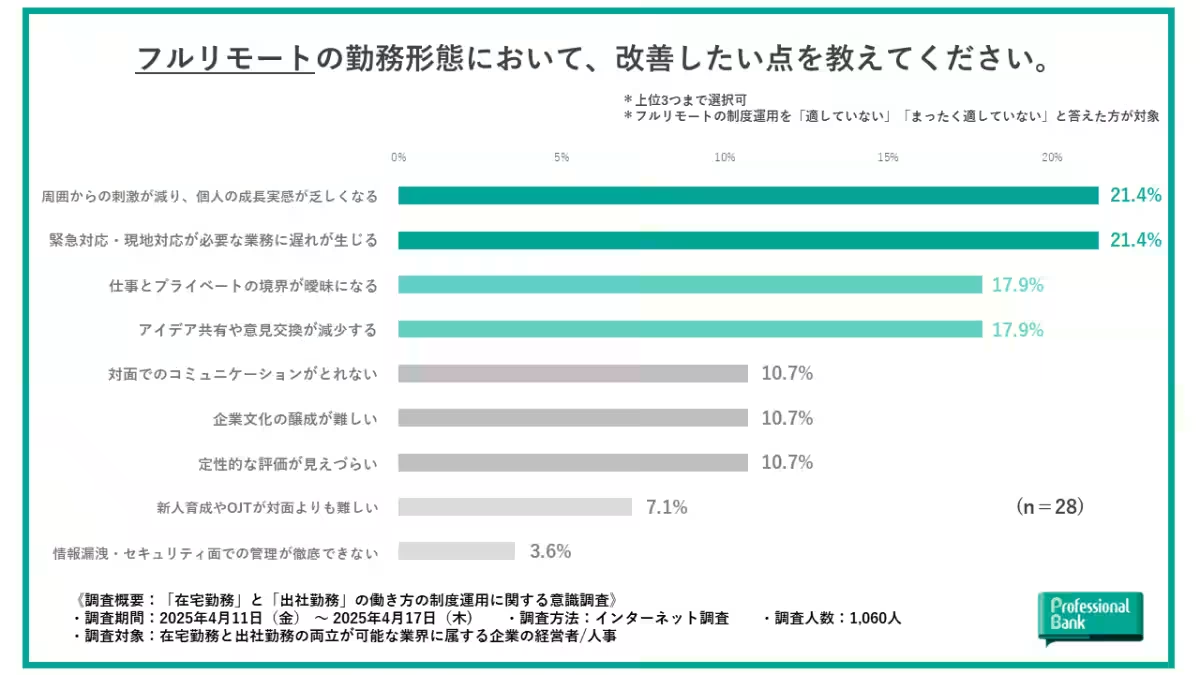

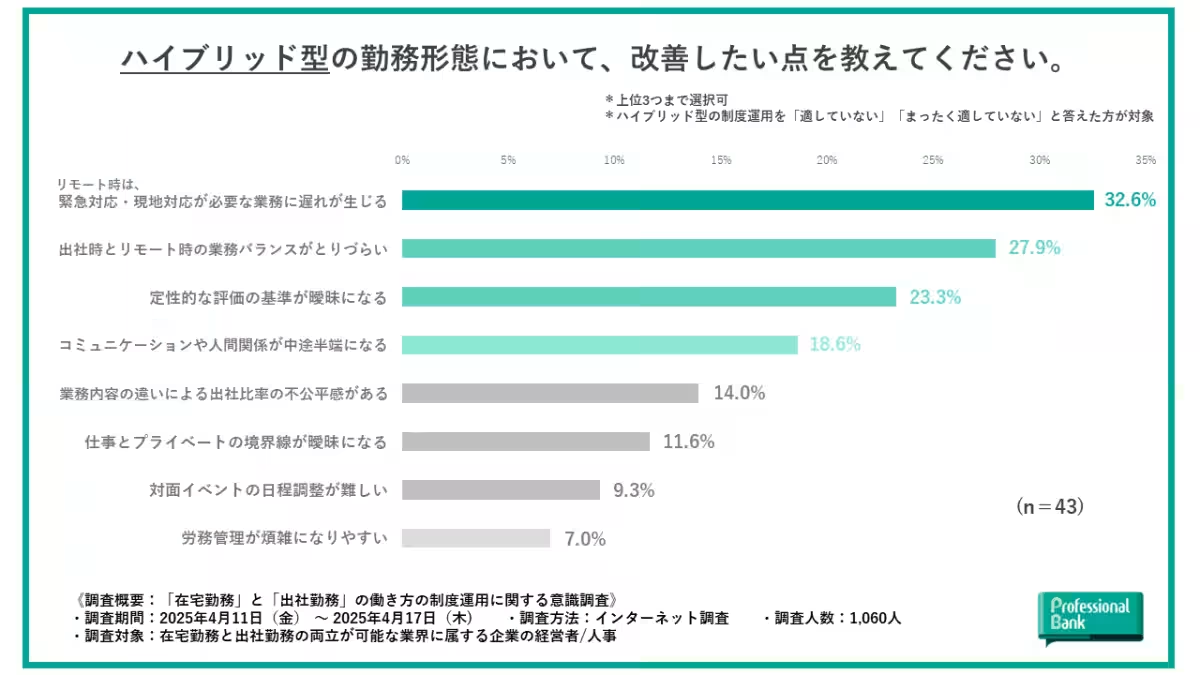
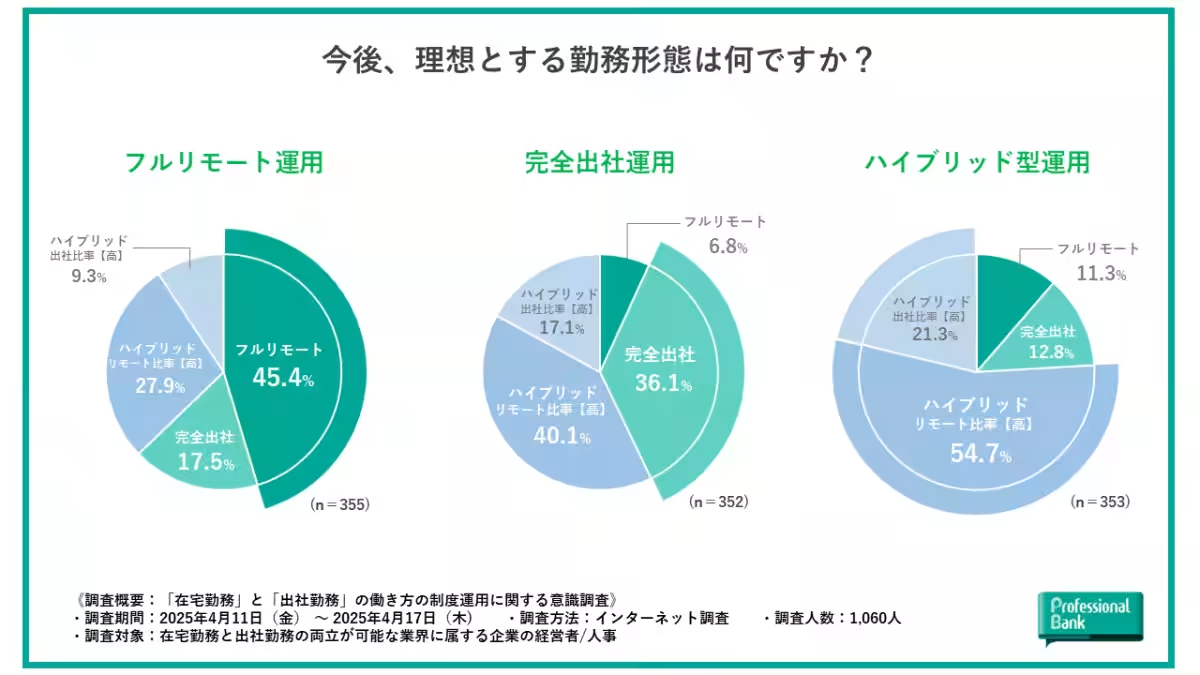
Topics People & Culture)










【About Using Articles】
You can freely use the title and article content by linking to the page where the article is posted.
※ Images cannot be used.
【About Links】
Links are free to use.